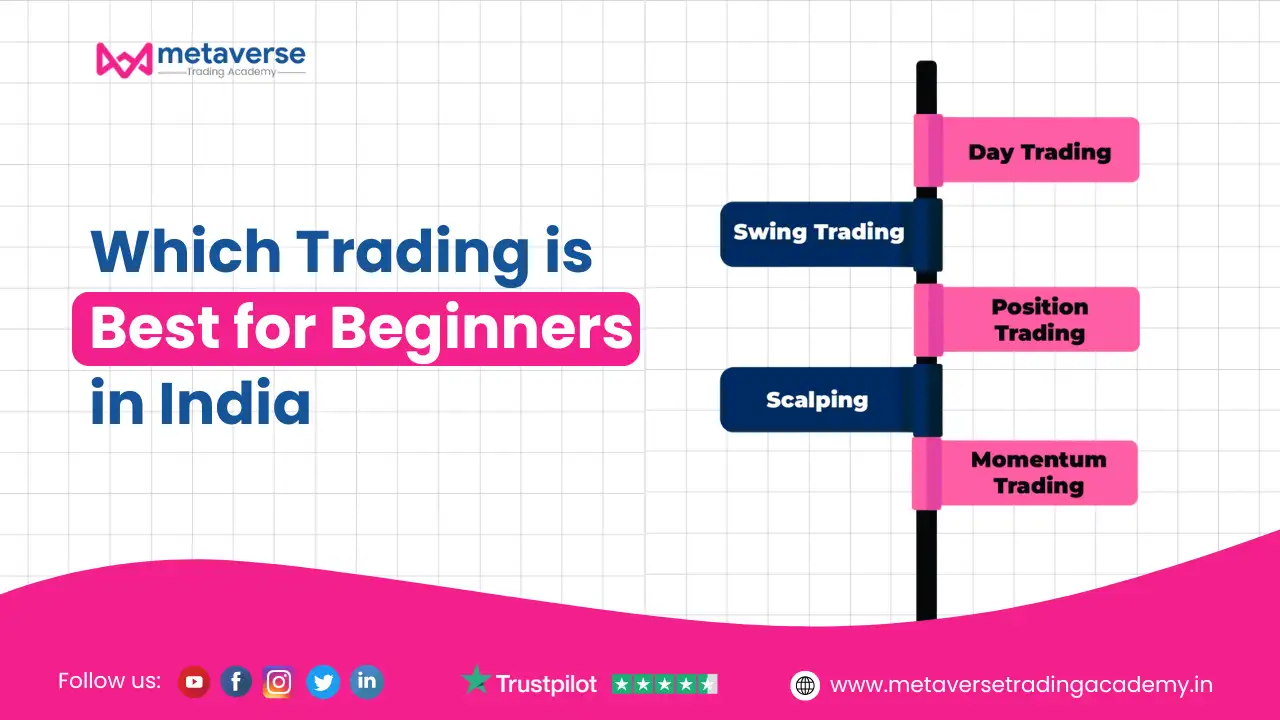
Which Trading is Best for Beginners in India
Trading has become an increasingly popular way to grow wealth in India, especially with the rise of online platforms and mobile apps that make it accessible to everyone. However, for beginners, the world of trading can be overwhelming. With so many options available, it’s crucial to understand which type of trading is best suited for those just starting out.
This article will explore the different types of trading, their pros and cons, and provide actionable insights to help beginners make informed decisions.
Before diving into the specifics, it’s essential to understand what trading entails. Trading involves buying and selling financial instruments like stocks, commodities, currencies, or derivatives with the aim of making a profit. Unlike investing, which focuses on long-term growth, trading is often short-term and requires active participation.
For beginners, the key is to start with a trading style that aligns with their risk tolerance, time availability, and financial goals. In India, the most common types of trading include stock trading, commodity trading, forex trading, and derivatives trading. Each has its own set of rules, risks, and rewards.
Stock trading is one of the most popular forms of trading in India, especially for beginners. It involves buying and selling shares of publicly listed companies on stock exchanges like the National Stock Exchange (NSE) and the Bombay Stock Exchange (BSE).
However, stock trading requires careful research and analysis. Beginners should focus on blue-chip stocks initially, as they are less volatile compared to mid-cap or small-cap stocks.
Commodity trading involves buying and selling raw materials like gold, silver, crude oil, and agricultural products. In India, commodity trading is facilitated through exchanges like the Multi Commodity Exchange (MCX) and the National Commodity and Derivatives Exchange (NCDEX).
Forex trading, or foreign exchange trading, involves buying and selling currencies in the global market. It is the largest financial market in the world, with a daily trading volume exceeding $6 trillion.
However, forex trading is highly speculative and requires a deep understanding of global economic factors. Beginners should approach it with caution and consider starting with a demo account to practice.
Derivatives trading involves financial instruments like futures and options, which derive their value from an underlying asset like stocks, commodities, or currencies. While derivatives can offer significant returns, they are also highly complex and risky.
| Trading Type | Description | Pros | Cons | Best For |
|---|---|---|---|---|
| Stock Trading | Buying and selling shares of publicly listed companies. | – Simple and transparent – Low barrier to entry – Abundant educational resources | – Requires research and analysis – Market volatility can lead to losses | Beginners with moderate risk tolerance and time to research. |
| Commodity Trading | Trading raw materials like gold, silver, crude oil, and agricultural products. | – Diversifies portfolio – Acts as a hedge against inflation | – Highly volatile – Influenced by global events – Complex supply-demand dynamics | Traders interested in diversification and willing to take higher risks. |
| Forex Trading | Buying and selling global currencies in the foreign exchange market. | – High liquidity – 24-hour market – Low transaction costs | – Highly speculative – Requires understanding of global economics – High leverage risks | Experienced traders or beginners willing to learn global market dynamics. |
| Derivatives Trading | Trading financial instruments like futures and options based on underlying assets. | – High leverage potential – Can hedge against market risks | – Highly complex – High risk of losses – Requires advanced strategies | Advanced traders with a strong understanding of market trends and strategies. |
| Mutual Funds/ETFs | Investing in a diversified portfolio managed by professionals. | – Low risk compared to direct trading – Professional management – Diversification | – Limited control over investments – Management fees – Lower potential returns | Beginners looking for a passive investment approach with minimal risk. |
When deciding which trading is best for beginners in India, consider the following factors:
Given the factors above, stock trading emerges as the most beginner-friendly option. It offers a balance of simplicity, transparency, and lower risk compared to other forms of trading. Additionally, the availability of educational resources and tools makes it easier for beginners to learn and grow.
Beginners often make mistakes that can lead to significant losses. Some common pitfalls include:
Technology has revolutionized trading, making it more accessible and efficient. Online trading platforms, mobile apps, and algorithmic trading tools have leveled the playing field for beginners. However, it’s essential to choose a reliable and user-friendly platform.
In India, trading is regulated by the Securities and Exchange Board of India (SEBI). Beginners should ensure that they trade through SEBI-registered brokers and platforms to avoid scams and frauds.
For beginners in India, stock trading is often the best starting point due to its simplicity, transparency, and lower risk compared to other forms of trading. However, it’s crucial to educate yourself, start small, and stay disciplined. As you gain experience, you can explore other trading styles like commodities, forex, or derivatives.
Remember, trading is not a get-rich-quick scheme. It requires patience, continuous learning, and a well-thought-out strategy. By following the tips and insights shared in this article, beginners can navigate the world of trading with confidence and increase their chances of success.
If you want to take your learning further, join Metaverse Trading Academy, where more than 50,000 students have already learned advanced strategies like Order Flow and Market Profile trading. Start your journey today at metaversetradingacademy.in.